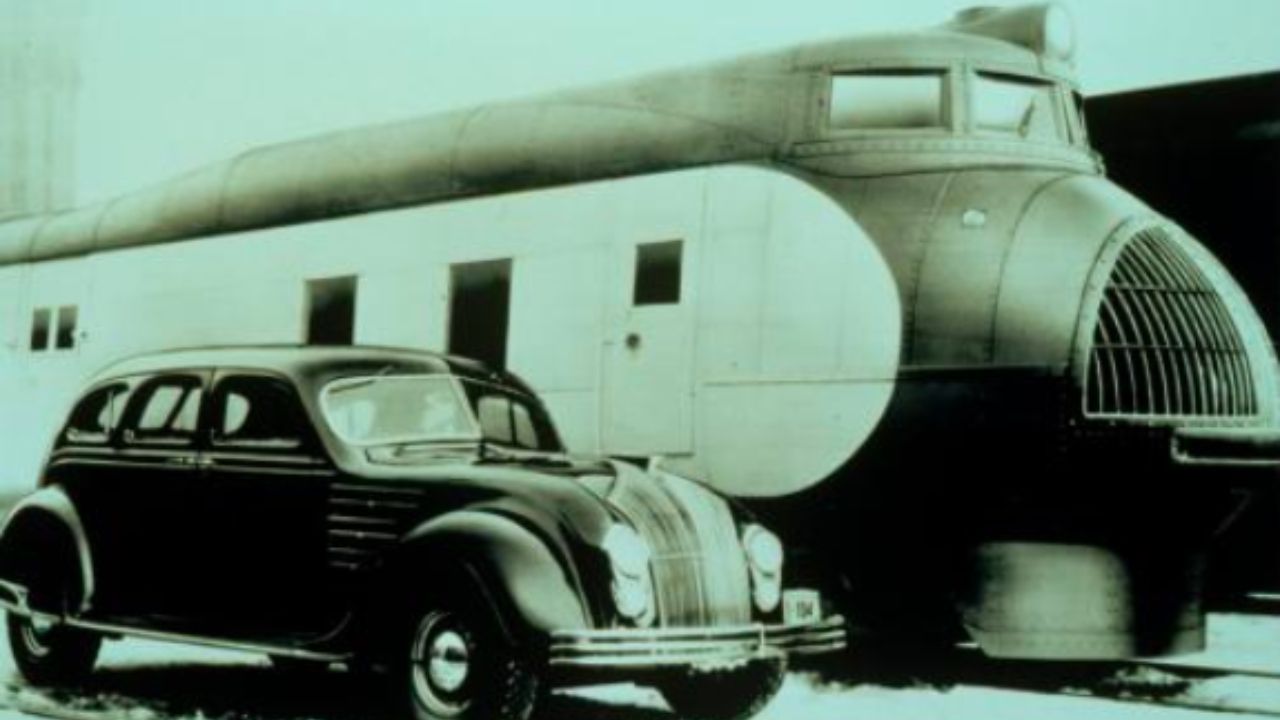
Battery electric drivetrains may be transforming mobility, but why are vehicle form factors being left behind?
In 1934, Chrysler introduced the Airflow. It was an extraordinary car for its era, for it was an engineering breakthrough. Using unitary body construction and excellent packaging inside for passengers, the Airflow was not only comfortable but was safer too compared to its contemporaries. However, the piece de resistance of the Airflow was its aerodynamics, which was arrived at after extensive wind-tunnel testing. With upright grilles and imposing bodywork, most other cars in the 1930s were aerodynamic disasters, and here the Airflow was designed to cut down drag – leading to better efficiency and performance. The ‘waterfall’ grille was rounded and extended up into the bonnet, the headlamps were faired in, and the front wheels were enclosed by full fenders while the rear fenders covered the wheels with side skirts. The Airflow was designed in keeping with that era’s fascination for streamlining, as seen in the aerodynamic designs of locomotives, buses, buildings and even home appliances. Despite all this, the Chrysler Airflow was a failure. Why?
Because it looked too unusual. While there are other reasons, like manufacturing delays, quality and deliveries, the dismal response received for what was a thoroughly modern car was attributed to its design – it was too advanced for consumer acceptance.
Why am I talking about the Airflow? Because I believe such a thing will never happen now. We, as customers, are beyond being shocked by any design that is unusual or eccentric. Advanced design is something that customers are keener to have than ever before. I believe that EVs have played a role in transforming the way even ICE vehicles – be it two-, three- or four-wheelers – look. Take the new Hyundai Verna, for example – it looks almost EV-ready.
Today, a big opportunity is staring at product planners and designers across the vehicle spectrum – an opportunity provided by the battery-electric drivetrain. Industry professionals are liberated from the tough conditions posed by ICE drivetrain and its consequent plumbing and fixtures. Conventional vehicles can only look so futuristic – owing to their drivetrain, they cannot be truly path-breaking. The design can only be evolutionary, not revolutionary. Today, you can create a BEV that may look outrageous and ultra-futuristic – and provided it meets the promised functionality and delivers value – consumer acceptance will not be found wanting.
Today, we aren’t even surprised to see those little low-speed EVs that the local kirana-wala uses to deliver groceries. What was he using earlier? Bicycles, right? Now you have custom-built little electric runabouts with a form factor that fits their requirements – making deliveries more efficient. Another example is the recently unveiled River Indie calling itself the SUV among electric two-wheelers. It is a clever match between form and functionality, a capability provided by a battery-electric drivetrain.
Electric drivetrains, combined with clever software, are already transforming mobility. Take for example of the new Yulu DEx GR and Miracle GR manufactured by Bajaj Auto catering to micro-mobility and urban mobility requirements – a perfect fit for the ride-sharing business. Not too far in the distant future, perhaps we’ll see distinctive-looking two-wheelers customised for bike-taxi requirements: a robust frame and strong suspension, a long wheelbase for rider comfort, space to store helmets, additional room for storing backpacks, etc. Similarly, electric trikes for goods delivery is also an idea whose time has come.
If mobility has to be reimagined, why should the form factor for cars be unchanged? If we can have two-wheelers catering to ride-sharing or goods delivery, why can’t we look at four-wheelers differently? Well, it’s not going to take long, I believe. MG Motor will most likely be the first off the block with its Air EV for passengers – a little urban runabout that makes so much sense given the driving conditions of our cities (the Maini Reva was ahead of its time!). Easy to have as a second or third car, a great fit for the milk run or even to get to the office quickly… The MG Comet may look radical and is also not expected to be cheap, but it is a true test of whether four-wheelers can push the limits of acceptable form factors the way two-wheelers have already done. Product planners are free to explore boundaries of what’s possible and use the enormous flexibility that the battery electric drivetrain provides to fill niches in the marketplace and the customer’s mind-space. May a hundred form factors bloom.
In the meanwhile, Chrysler is mulling the launch of the 21st-century version of the Airflow. Stellantis showcased it as an EV concept last year that – dare I say this – looks conventional. Perhaps Chrysler is in no hurry to repeat what happened back in 1934!























Write your Comment